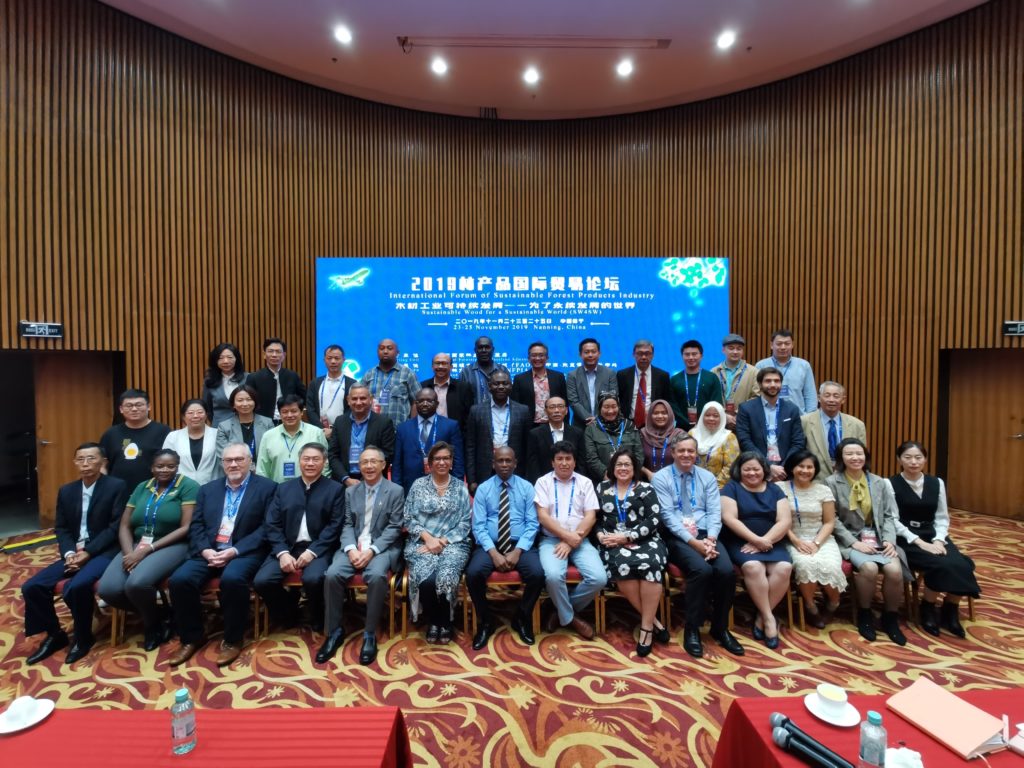

04.12.2019
How sustainable is the furniture in our homes, the paper we use, the wood we burn, or the timber that goes into building structures?
These questions are being asked, more than ever, amid growing alarm over deforestation and the impact of climate change.
People on every continent depend on wood products from the world’s forests and many of the world’s poorest people rely directly on timber and other forest resources for their subsistence and income. But unsustainable practices remain a major challenge, from production to consumption.

Countries and producers need to curb the presence of illegal wood in the markets and, at the same time, increase the market value of sustainable products, encourage investments in the sector, and ensure that smaller producers have the support and know-how they need to engage in sustainable trade.
Indonesia, for example, is tackling forest losses in Java through reforestation and by sourcing wood from planted trees. The program, in place since 1998, has worked with local farmer cooperatives to produce millions of seedlings of fast-growing species each year, including falcata, balsa, agathis, teak and fruit trees.
In an important step in the right direction, many countries are working together to address this challenge, as seen in a recent gathering, in Nanning, China, of experts in forestry and related sectors from every region of the world.
The 23-25 November meeting was part of the Sustainable Wood for a Sustainable World Initiative (SW4SW), which was formed in 2018 by the Food and Agriculture Organization of the UN (FAO) and various partners to reconcile the international demand for wood with social, economic and environmental needs.
Meeting participants explored ways in which wood value chains, from harvest to consumption, can be improved to support achievement of the Sustainable Development Goals (SDGs) and how South-South Cooperation between countries could advance the process.
Suggestions for action focused mostly on achieving SDG 8 (decent work and economic growth), SDG 13 (climate action) and SDG15 (life on land). Specific areas of work mentioned included increasing exchanges for better understanding and respect of national legal systems; training for wood processing to increase generation of skilled jobs; investments and technology transfers to improve wood processing; gathering evidence to integrate sustainable wood value chains in REDD+ emissions-reduction strategies; and technical exchanges and capacity building on plantation systems.
Led by the China National Wood-Based Panel Association, the Chinese presented these and other potential areas for South-South cooperation. A field trip illustrated the multiple contributions of wood value chains with concrete examples. A forest park in Guangxi Province used for conservation of native species, but also for research on plantations of native and exotic species, and tourism, in particular for the elderly, recognizing the important positive impacts of forests on health; three different wood-panels mills, from very advanced to more traditional technologies; and a wood biomass power plant operating with residues, which supports a forest industrial district.
Sustainable and legal wood industries can benefit greatly from consumer support. The trade of different species traded as rosewood received special attention during the meeting. Following a “boom and bust” pattern, these species are becoming endangered after over-harvesting pushed by increased demand. Trade of these species migrated from Asia to Africa due to diminishing stocks, and now exerts enormous pressure on stocks of countries such as Sierra Leone and Guinea Bissau.
The newest member of the SW4SW steering committee, the Secretariat of the Convention on International Trade in Endangered Species of Wild Fauna and Flora (CITES), took steps earlier this year to discourage trade of mukula wood from Zambia, also part of the species generally called rosewood, by putting it on a list of endangered species to be monitored.
Thanks to improved technologies and methodologies, countries can now do a better job of keeping track of where and how wood is produced and traded, and strengthen the capacities of producers, including rural smallholders, to thrive through sustainable trade and to raise public awareness of how consumer choices can help to promote sustainability.
The SW4SW initiative is a strong sign of international commitment to boost sustainable wood production. The challenge, now, is to translate this political will and the tools at hand into greater results on the ground–and to do so quickly.